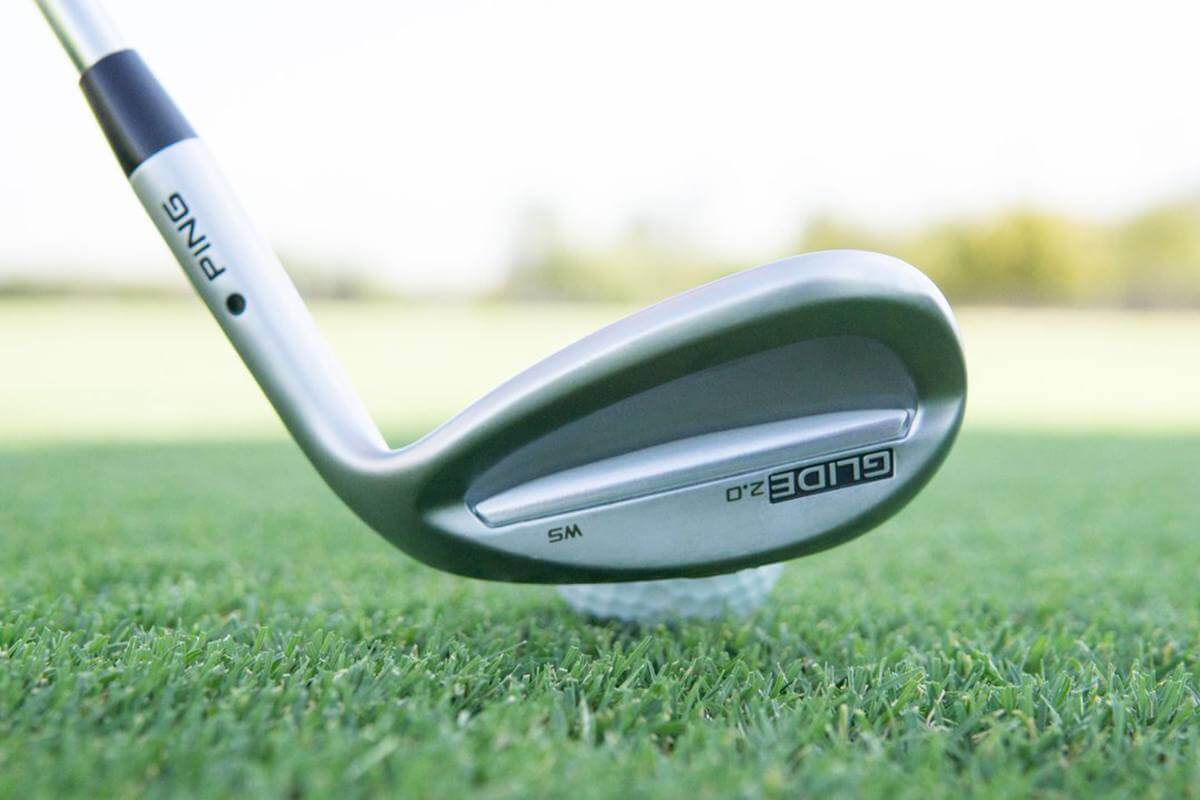I recently conducted a wedge grind test in conjunction with PING. The objective was to see if there is any credence to the idea that higher handicap golfers would improve wedge performance when using more bounce and a wider sole, while better golfers would perform better when using less bounce and a thinner sole.
One of the challenges that many club fitters face is that, as a matter of practicality, testing often takes place indoors or off an artificial surface. Much of my early wedge testing has been off mats or even tees to ‘clean-up’ the strike and I’ve come to learn that in the real world, outside on real turf, the results are often very different.
As a result, we decided to test a range of golfers on a finesse shot off real grass. After each shot the golfer offered their feedback based on the quality and feel of the strike.
Test Overview
- The test involved three wedges, all with the same grip, shaft, length, lie and weight:
- A – 58º prototype Glide 2.0 wedge with 6º effective bounce
- B – 58º prototype Glide 2.0 wedge with 10º effective bounce
- C – 58º prototype Glide 2.0 wedge with 14º effective bounce
- 18 participants of various ability levels (0-20 handicap)
- Each tester hit 8 shots with each club with the required objective of carrying the ball 25 yards to a target on flat ground
- The test was conducted off real grass using preferred lies and Callaway range balls
- Participants were not informed of the differences between the clubs
Test Process
- Each player hit four shots with each club and then repeated the sequence
- Each club was properly cleaned with a wet towel prior to the start of the test and after the player had hit four shots with each of the clubs. The player was allowed to wipe the face with their hand or shoe between shots, but was not permitted to use a towel other than before the test or after shot four.
- Each player was asked to rank the quality of the strike (not the result) from 1-4 with 1 being “I couldn’t hit it any worse” and 4 being “I couldn’t hit it any better.”
- Scores were tallied for each club. At the end of the test each player was asked which wedge they would prefer and why they preferred it.
- Data from each shot was collected using TrackMan 4.
What did we learn?
- Having the golfer rank the quality of the strike for each shot offered interesting insight into what the player felt about the shot beyond simply assessing the launch monitor data.
- Quality of strike feedback was reasonably well distributed, with the thin sole being rated highest by 8 testers compared to 5 each for the standard and wide soles.
- Players gave varied reasons for choosing their favorite wedge. Some golfers based their choice on the quality of strike, others on the observation of ball flight, while many used looks as the deciding factor. Interestingly, despite identical weights across the wedges tested, a number of the golfers referred to the perceived heavier weight of their favorite club as the justification for their selection.
- The player’s assigned score for quality of strike was a much better indicator of which club the player would choose to play than any of the standard performance characteristics.
- Twelve of the eighteen golfers chose the club with the highest quality of strike score as their favorite. The next-best predictor was consistency of ball speed.
- Contradicting the conventional wisdom, there was little to no correlation between handicap or attack angle and the chosen wedge sole at the distance we evaluated. While many of the steeper players seemed to choose standard or wide sole, the correlation wasn’t strong.
Spin Rates: Clean vs. Dirty
- Since we had the data anyway, we also looked at the average spin rate on the 1st and 5th shots, where the club had been cleaned and dried versus the 4th and 8th shots where in general the club was less clean. The difference in spin was significant for all 3 clubs in the test and on average was between 15% and 20% higher when the club has been cleaned.
The Take-Away
I’d encourage all golfers to go through a wedge fitting where they hit a variety of different grinds off real grass and qualitatively rank the strike on each shot.
Additionally, ensure to evaluate wedge performance at different distances and under a variety of conditions (sand, rough, tight lie, etc.) The different distances recommendation isn’t born from this test, but it’s always a practical piece of advice. It’s important to consider different trajectories and distances too. This qualitative approach appears to match the golfer with the right club better than any performance-related metric.
Finally, please remember to keep those wedges clean and dry. Your spin rates will drop significantly if you don’t.

















Bill
5 years ago
Did I miss it…how does wedge A, B, C March with TS, SS, WS?
Jeremy
5 years ago
Thin sole, standard sole, and wide sole.